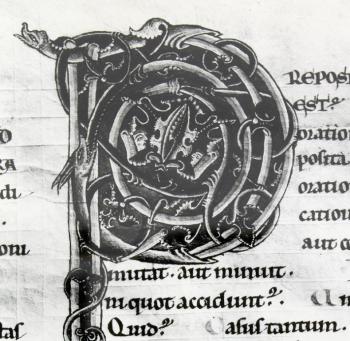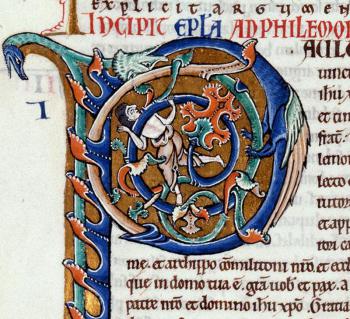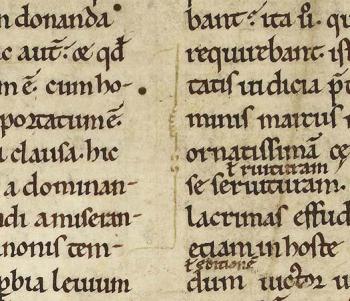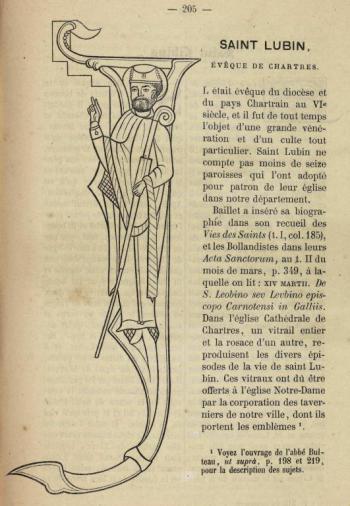Illumination
The manuscripts housed at Chartres since the Middle Ages were not all copied and illuminated there. For example, the canons of the cathedral bequeathed many law manuscripts to the chapter, some of which were made in Italy, such as ms. 150, which contains the Decretals of Innocent IV. In order to define the stylistic characteristics of Chartrain illumination, examples must be gathered together by comparing manuscripts still extant at Chartres (or known through old photographs) with those that were made at Chartres but which are now dispersed worldwide. The study of the ornamental decoration plays a primary role in identifying new manuscripts, especially the modest penwork initials, with their ink-drawn motifs, which form a repertory that is typical of twelfth-century Chartrain manuscripts.
The decorative elements ought not to be used in isolation for dating and localizing a manuscript. The script, the nature of the text, the history of its transmission, its recipient and later owners must all be taken into consideration. To illustrate this point, it is useful to remember that in the early twelfth century the Counts of Champagne were at the same time the counts of Chartres and Blois, which explains why, during the 1140s, the same artist who illuminated the Heptateuchon of Thierry de Chartres also painted two Bibles that were undoubtedly ordered by Count Thibaud II for himself and Saint Bernard.
Readers’ notes and markings
The canons of the Cathedral of Chartres frequently borrowed books from the chapter library. Medieval readers often left various markings in manuscripts they owned or consulted: ex libris, commentaries, graphic signs of one kind or another next to important passages. By noting these marks systematically and comparing them to those found in manuscripts known to have come from Chartres, new Chartrain manuscripts can sometimes be identified.
Chartrain liturgy
The Cathedral of Chartres is dedicated to the Virgin. Her cult was promoted notably by Bishop Fulbert (c. 960-1028), who wrote chants and sermons in her honor. Among the church’s most precious relics, other than the tunic of the Virgin, was the cranium of Saint Anne, given in 1204. Saint Chéron (Caraunus), a fifth-century martyr, and especially Saint Lubin (Leobinus) were particularly venerated. Two windows in the cathedral are dedicated to them. Saint Laumer (Laudomarus) of Blois and Saint Piat of Tournai also received special honors at Chartres. The dedication of the cathedral is celebrated on the 17th of October.
Canon Yves Delaporte devoted several studies to the Chartrain liturgy. In 1953 he edited the ms. 1058: L’Ordinaire chartrain du XIIIe siècle publié d’après le manuscript original, Chartres, 1953 (Société archéologique d’Eure-et-Loir, t. XIX). In his introduction he inventoried the liturgical manuscripts in the municipal library before the fire in 1944 and listed the local feasts in the sanctoral. The cathedral’s rich musical repertory has attracted the attention of musicologists for some time. Using pre-war photographs, Yves Delaporte published Fragments des manuscrits de Chartres, reproduction phototypique, Abbaye de Solesmes, 1958 (Paléographie musicale, XVII). For a recent state of the question on Chartrain liturgy, see Margot Fassler, The Virgin of Chartres. Making History through Liturgy and the Arts, New Haven, London, 2010. For the short office of the Virgin according to the use of Chartres, see the website devoted to books of hours created and maintained by Erik Drigsdahl : http://manuscripts.org.uk/manuscripts/chd.dk/.




